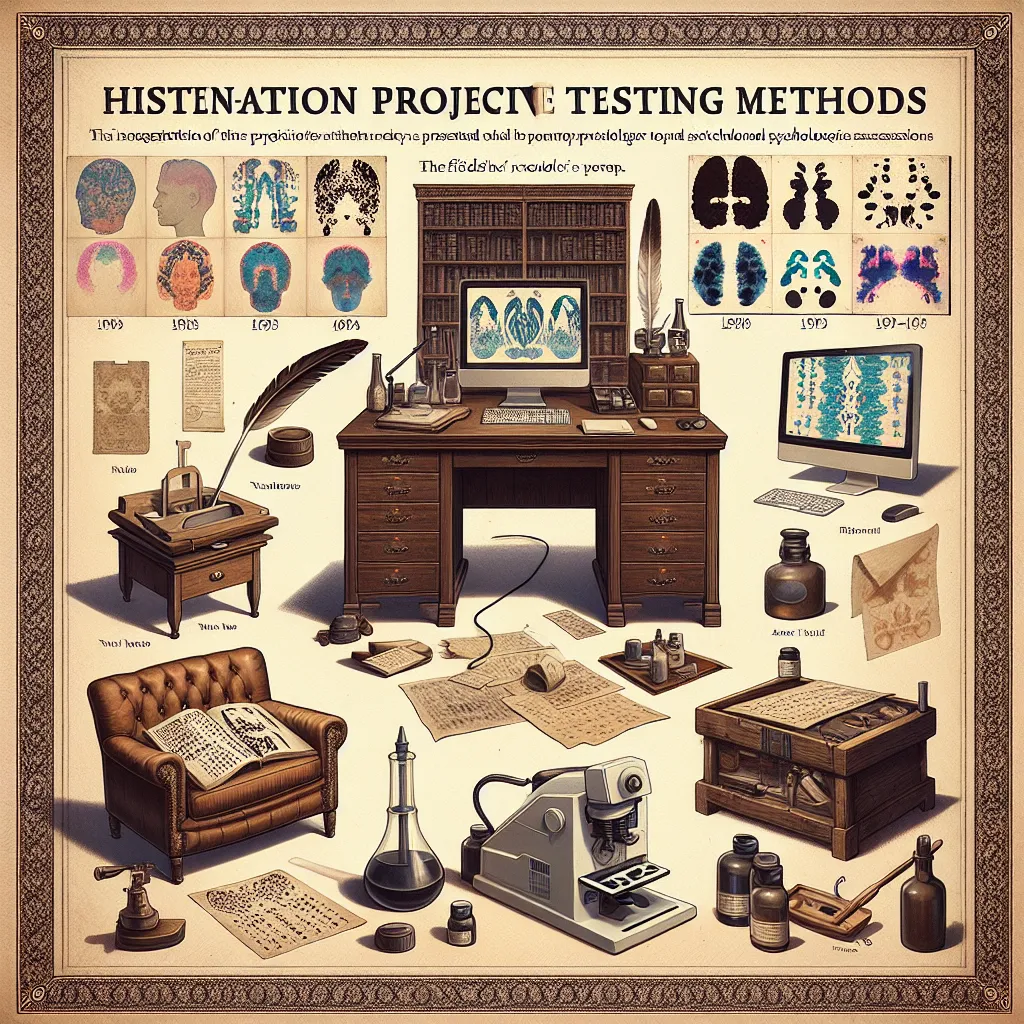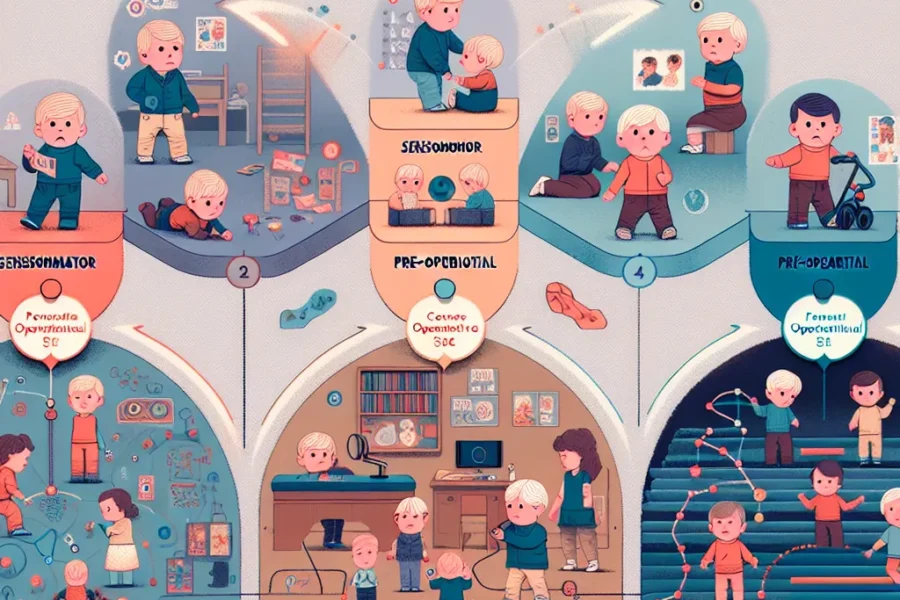Projective testing is a captivating and insightful sphere of psychological evaluation that has played a pivotal role in understanding the intricate facets of human personality. From the inkblots of the Rorschach test to the thematic apperceptions of storytelling, projective tests have provided psychologists and researchers with a window into the subconscious minds of individuals for over a century. This article delves into the fascinating history of projective testing and the various methodologies used to uncover the hidden depths of human psyche.
The history of projective testing dates back to the early 20th century, with roots strongly intertwined with psychoanalytic theories of Sigmund Freud and Carl Jung. Freud’s work on free association and dream analysis laid the foundation for projective techniques, where individuals would project their inner thoughts, feelings, and conflicts onto ambiguous stimuli. Meanwhile, Jung’s word association experiments further emphasized the potential of using indirect methods to tap into the unconscious.
The initial breakthrough in projective testing came with the introduction of the Rorschach inkblot test, developed by Swiss psychiatrist Hermann Rorschach in the 1920s. The Rorschach test consists of a series of ten inkblot cards that are presented to an individual. The test-taker is asked to describe what they see in the inkblots. The responses give insight into the individual’s perceptual processes, personal interests, and potentially, their unconscious thoughts.
The success and wide acceptance of the Rorschach test laid the groundwork for the development of other projective techniques. One such test is the Thematic Apperception Test (TAT), created by American psychologists Henry A. Murray and Christiana D. Morgan in the 1930s. The TAT consists of ambiguous pictures, often depicting people in various situations. Test-takers are asked to tell a story about each image, including the events leading up to the situation, the characters’ thoughts and feelings, and the outcome. These stories are then interpreted to reveal underlying motives, concerns, and the way the individual views the world.
Another significant projective technique is the Draw-A-Person Test (DAP), which was developed by Florence Goodenough in 1926. The DAP test asks individuals to draw a person, and from this drawing, inferences are made about their emotional state, self-concept, and other psychological attributes. Extensions of this test include the House-Tree-Person (HTP) and the Kinetic Family Drawing (KFD), which offer richer sources of symbolic expression and are used particularly with children to understand their emotional and relational dynamics.
Projective tests have a variety of applications. In clinical settings, they assist in the diagnosis of mental disorders, such as personality disorders or psychoses. They are also used in forensic psychology to assess the mental state of defendants in legal cases. Additionally, in educational and organizational environments, projective tests play a role in assessing personality traits that may influence learning styles or job performance.
The administration and interpretation of projective tests require a high degree of professional training and skill. Psychologists and trained examiners use a variety of scoring systems and qualitative methods to analyze the responses. Two primary approaches exist: the nomothetic approach, which involves applying standardized scores and interpretations to compare an individual’s responses to normative data, and the idiographic approach, which focuses on the unique narrative and symbolism in an individual’s responses.
The nomothetic approach includes systems like the Exner system for the Rorschach test, which standardizes scoring and is one of the most widely used methods for interpreting the inkblots. On the other hand, the idiographic approach favors a more case-centered and interpretive analysis that considers the individual’s unique background, experiences, and psychological context.
In recent decades, projective testing has been the subject of debate and controversy. Critics point to issues such as the subjectivity of interpretation, lack of standardization, and lower reliability and validity compared to objective tests. However, proponents argue that when administered and interpreted by trained professionals, projective tests offer unparalleled insights that objective tests may overlook, particularly in revealing conflicts, defenses, and implicit processes of personality.
Advancements in technology and qualitative research methods are enhancing projective testing’s reliability and validity. Computer-assisted scoring systems are increasingly being adopted to help standardize interpretations and reduce subjective bias. And sophisticated qualitative analysis software enables a more in-depth examination of response patterns and thematic content.
Another contemporary trend in projective testing is the integration of neuroscientific findings with traditional projective methods. Research into brain regions associated with creativity, emotion, and narrative processing has begun to illuminate the neural underpinnings of responses to projective stimuli. This integration promises to deepen our understanding of the psychobiological aspects of projective responses and potentially refine test methodologies.
Despite the challenges, projective testing remains an integral part of psychological assessment. The enduring allure of projective techniques lies in their ability to facilitate a deep and nuanced exploration of the human psyche. Each test acts as a blank canvas, inviting individuals to reveal their inner worlds through interpretation and imagination. Whether used in therapy, employment settings, or research, projective tests continue to provide invaluable insights into the workings of the mind.
Projective testing stands as a testament to the creativity and richness of psychological assessment methods. By utilizing ambiguous stimuli to probe the depths of personality and cognition, projective tests grant diverse perspectives on the hidden dimensions of human behavior. Whether through the analysis of an inkblot or the narrative of a picture, the journey into the fascinating world of projective testing remains an exploratory and transformative experience for both the examiner and the examinee.
In conclusion, the fascinating world of projective testing encompasses a wide span of historical developments and an array of dynamic methods. Its history is interwoven with the evolution of psychological thought, and its methods continue to evolve in complexity and sophistication. Projective testing provides an invaluable tool for psychologists and one whose application and interpretation require a careful balancing act between art and science. While it faces its share of criticism, the world of projective testing persists as a unique and invaluable approach to understanding the myriad layers of the human psyche.



Leave a Comment